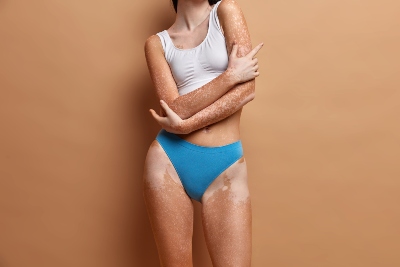.jpg)
Pigmentation means coloration. These coloring disorders affect the color of the skin and it obtains its color from a pigment called melanin, which is produced by specialized cells (melanocytes) that are distributed among the other cells of the deepest layer of the basal layer of the skin. the skin. When these cells present some alteration, the production of melanin is not the same and this manifests itself with some pigmentation disorders that affect certain sectors of the skin or body.
People with light skin produce very little melanin, those with darker skin produce moderate amounts, and those with very dark skin produce even more. People with albinism have no or very little melanin, so their skin appears white or light pink. Generally, melanin is distributed evenly in the skin, but sometimes there are areas with more melanin. These include freckles, age spots and melasma.
Pigmentation alterations present in different ways: They can be generalized and affect several areas of the skin or they can be localized and affect only some parts. The changes that occur in pigmentation are called:
People with light skin produce very little melanin, those with darker skin produce moderate amounts, and those with very dark skin produce even more. People with albinism have no or very little melanin, so their skin appears white or light pink. Generally, melanin is distributed evenly in the skin, but sometimes there are areas with more melanin. These include freckles, age spots and melasma.
Pigmentation alterations present in different ways: They can be generalized and affect several areas of the skin or they can be localized and affect only some parts. The changes that occur in pigmentation are called:
Depigmentation
It is the complete loss of pigment. The skin is white and when it occurs in a generalized manner is when the alteration known as vitiligo.


Hypopigmentation
It is an extremely low amount of melanin. The skin has a lighter color than normal and its generalized form on the skin occurs in albinism.
.jpg)
.jpg)
Hyperpigmentation
It is usually caused by a very high amount of melanin, sometimes it can also be caused by the deposition of other pigmented substances that are not usually present in the skin. The skin has a darker color and is sometimes a different color than normal. Hyperpigmentation can be caused by:
- Disorders that cause inflammation
- Drugs or substances
- Exposure to sunlight

Finally, we can conclude that many skin alterations can be caused by substances that we have in our body such as hemoglobin, carotenes and mainly melanin, but on other occasions they can appear thanks to skin diseases or treatments, which is why it is recommended that you always Use quality skin products and treat pigmentation with professionals who can provide you with the appropriate treatment for your type of alteration.
Sources
Introduction to skin pigmentation
Skin pigmentation disorders
Pigmentation disorders (I): Causes and types
Skin pigmentation disorders
Pigmentation problems. Treatment
Carolina Cardona Valencia, Social Communicator.
For Satori Beauty
Sources
Introduction to skin pigmentation
Skin pigmentation disorders
Pigmentation disorders (I): Causes and types
Skin pigmentation disorders
Pigmentation problems. Treatment
Carolina Cardona Valencia, Social Communicator.
For Satori Beauty

